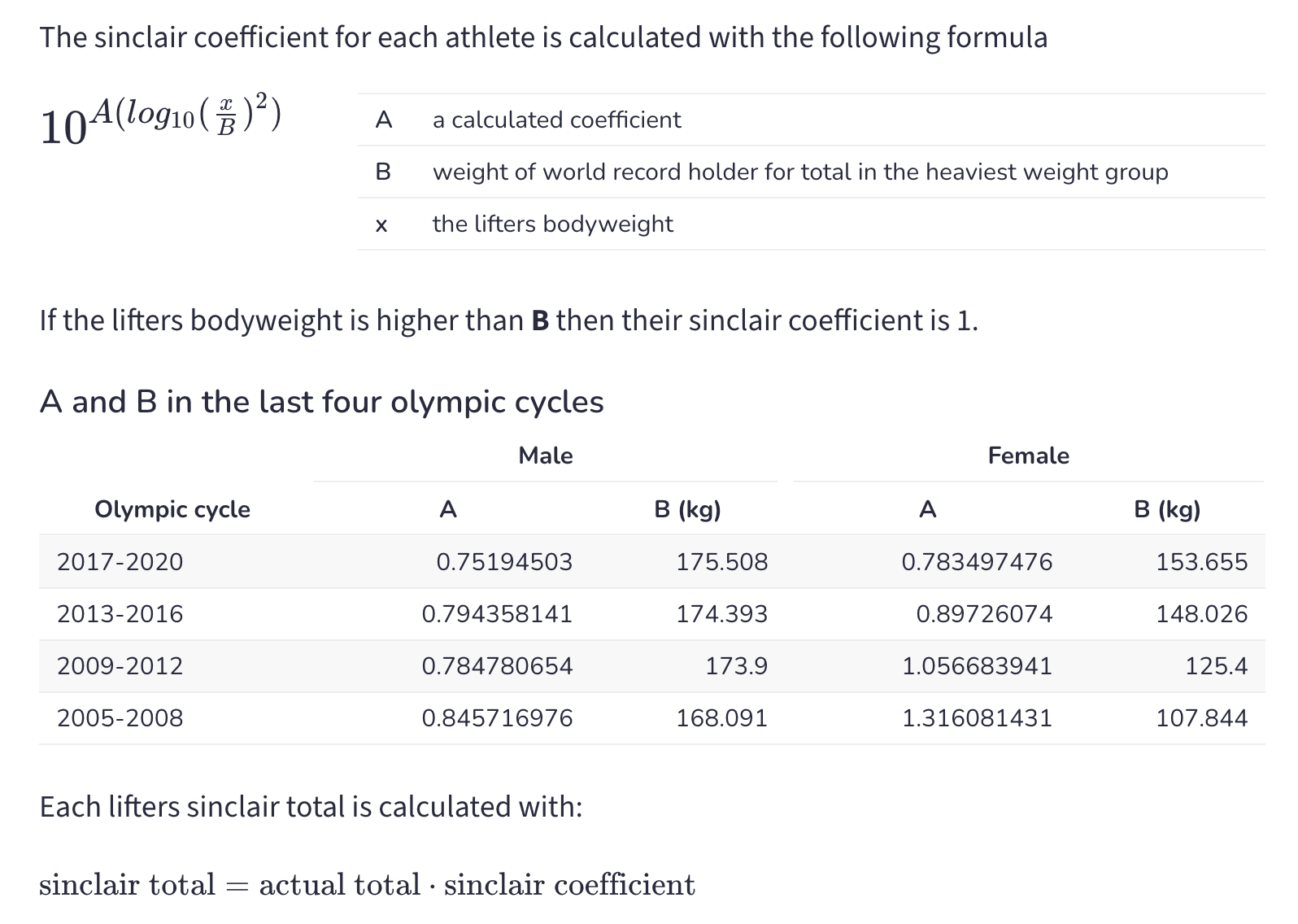Prioritize strength development through structured weightlifting programs.
Focus on both the snatch and clean and jerk lifts to maximize your overall total.
Implement progressive overload by gradually increasing the weights you lift over time.
Work with experienced coaches to refine your lifting technique.
Regularly practice the lifts with a focus on proper form and efficient movement patterns.
Consider video analysis to identify and address technical deficiencies.
Maintain a consistent training schedule to ensure continuous progress.
Train frequently, but be mindful of avoiding overtraining and burnout by allowing for rest and recovery days.
Consult with a sports nutritionist to develop a diet that supports your training and performance goals.
Ensure you're consuming an appropriate balance of macronutrients (carbohydrates, proteins, and fats) and staying well-hydrated.
Evaluate your body weight and consider whether moving up or down a weight class could be advantageous for your performance.
Work with a registered dietitian or nutritionist to manage your body composition effectively.
Prioritize sleep and rest to allow for proper recovery and muscle growth.
Incorporate active recovery techniques, such as foam rolling and stretching, into your routine.
Develop mental resilience and focus through visualization, meditation, and goal setting.
Address performance anxiety or mental blocks with the help of a sports psychologist if needed.
Gain experience by participating in more competitions to become accustomed to the pressure and environment.
Learn from each competition to make adjustments and improvements.
Record and review your lifts to identify areas for improvement in technique and form.
Compare your lifts to those of elite weightlifters for reference.
Consider incorporating complementary training methods like strength and conditioning, plyometrics, and mobility work to enhance your overall athleticism.
Seek advice and guidance from experienced weightlifting coaches, sports scientists, and sports medicine professionals.
Establish achievable short-term and long-term goals to track your progress and maintain motivation.
Improving your Sinclair Total is a long-term endeavor that requires dedication, patience, and consistent effort. Progress may be incremental, so stay committed to your training and continuously seek ways to refine your approach.
The sport of weightlifting, an integral part of the Olympic Games since their inception in ancient Greece, has evolved into a display of extraordinary strength, precision, and athleticism. Among the two primary lifts in competitive weightlifting – the Snatch and the Clean and Jerk – the Clean and Jerk stands out as a pinnacle of power and technique. It is a discipline that demands not only raw physical strength but also a high level of skill and mental focus. In this introduction to the Clean and Jerk in Olympic sports, we will explore the rich history, the fundamental techniques, and the incredible athletes who have made this discipline a cornerstone of Olympic competition. Whether you are a curious observer or an aspiring weightlifter, this exploration will shed light on the captivating world of weightlifting and its enduring place in the realm of elite athletic endeavors.
The Sinclair coefficient, often referred to as the Sinclair formula or Sinclair coefficient, is a method used in the sport of weightlifting to adjust and normalize the performance of athletes across different weight categories. It was developed to account for the fact that in weightlifting, athletes in different weight classes might lift different absolute weights, but this does not necessarily reflect their relative strength or skill. The Sinclair coefficient aims to provide a fair comparison of lifters' performances, irrespective of their body weight.
The coefficient is updated and recalculated periodically, typically from the 1st of January the year after each Olympic year until the 31st of December of the next Olympic year. This ensures that the coefficients remain relevant and reflective of current weightlifting standards.
The Sinclair coefficient for an individual lifter is determined using a mathematical formula. It starts with the lifter's bodyweight (denoted as 'x') and the weight of the world record holder for the total lift (i.e., the combined weight of the snatch and clean and jerk) in the heaviest weight category (denoted as 'B'). The formula then applies two main components:
If the lifter's bodyweight exceeds the weight of the world record holder in the heaviest weight category (B), their Sinclair coefficient is set to 1. This provision accounts for the idea that once an athlete surpasses the achievements of the heaviest weight category, their performance should no longer be adjusted, as they are already competing at the highest level.
In essence, the Sinclair coefficient allows for a more equitable comparison of weightlifters' performances, enabling athletes from different weight categories to be ranked and evaluated fairly based on their relative strength, skill, and abilities, rather than just the absolute weight they lift. This makes it a valuable tool in the world of weightlifting, aiding in competitions, rankings, and the recognition of talent and potential across diverse weight classes.

The clean and jerk is a two-part lift:
The snatch is a single-movement lift:
The "total" in weightlifting refers to the combined maximum weight a lifter can successfully lift in both the clean and jerk and the snatch during a competition. It's a measure of their overall strength and technique in these two lifts. Weightlifters aim to maximize their total to compete successfully in their weight class.
The Sinclair score, a valuable tool in the sport of weightlifting, finds wide-ranging applications in the competitive arena. It serves as a means to level the playing field by allowing weightlifters from different weight categories to be fairly compared. This normalization of performances enables coaches, athletes, and competition organizers to assess and rank athletes based on their true strength and skill rather than simply the weight they lift. Sinclair scores are instrumental in competitions, helping to determine winners, award medals, and acknowledge outstanding performances. Furthermore, they aid in talent identification and development, allowing coaches to recognize potential across diverse weight classes and nurture promising athletes. Overall, the Sinclair score plays a pivotal role in promoting fairness and accuracy within the sport of weightlifting.
Home Blog Terms of Use Privacy Policy About Us Contact Us
Copyright © 2024 - SinclairCalculator.com | All Rights Reserved